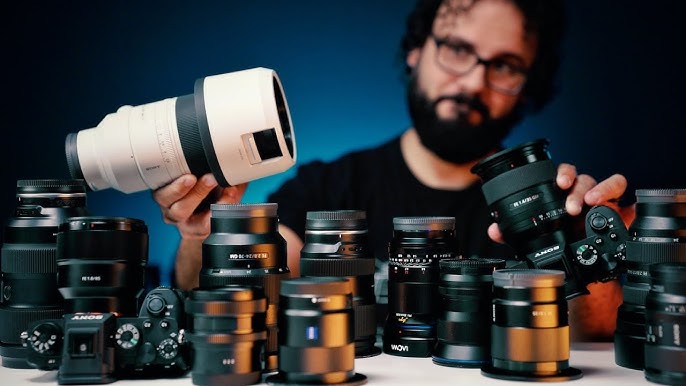Choosing The Right Equipment: Which Cameras And Lenses Deliver Better Results?
Selecting the right equipment is crucial for achieving stunning portrait photographs. Here are key considerations:
- Camera Choice: A DSLR or mirrorless camera is ideal for portrait photography as they offer greater control over settings and superior image quality. Look for a model with a larger sensor to enhance performance in low-light conditions.
- Lens Selection: For portraits, prime lenses with focal lengths of 50mm, 85mm, or 135mm are highly recommended. These lenses provide a natural perspective and beautiful background blur (bokeh). A wide aperture (f/1.8 or f/1.4) is beneficial for creating depth of field.
- Additional Gear: A tripod can stabilize your shots, while a remote shutter release helps prevent camera shake. Consider also investing in a good camera bag for protection and transport.
Choosing the right equipment tailored to your style can significantly enhance the quality of your portraits.
Lighting Techniques: Using Natural And Artificial Light
Lighting plays a vital role in portrait photography, influencing mood and clarity. Here are some techniques to consider:
- Natural Light: Utilizing soft, natural light is often preferred. The best times to shoot are during the “golden hour”—shortly after sunrise and before sunset—when the light is warm and flattering.
- Artificial Light: If shooting indoors or in low light, consider using off-camera flash or continuous lighting. Softboxes and reflectors can help diffuse harsh light and create a soft glow on your subject’s face.
- Light Direction and Angle: Experiment with different angles and directions of light. Side lighting can create dramatic shadows, while front lighting provides even illumination. Understanding how light interacts with your subject can enhance your portraits dramatically.
Mastering lighting techniques will elevate the overall quality of your portrait photography.
Exposure And Composition: Basic Rules For İmpactful Portraits
Understanding exposure and composition is essential for creating compelling portraits. Here are some fundamental rules:
- Exposure Settings: For portraits, a wide aperture (low f-stop number) allows for a shallow depth of field, focusing on the subject while blurring the background. Adjust shutter speed and ISO accordingly to achieve proper exposure.
- Composition Rules: Use the rule of thirds to position your subject off-center, creating a more dynamic composition. Pay attention to the background, ensuring it doesn’t distract from the subject.
- Framing and Angles: Try different angles and perspectives to find the most flattering view of your subject. Experiment with framing your subject within the environment to add context and depth to your images.
By applying these exposure and composition techniques, you can capture more impactful portraits.
Communicating With The Model: Achieving Relaxed And Natural Poses
Effective communication with your model is crucial for achieving natural and relaxed poses. Here are some tips:
- Create a Comfortable Atmosphere: Start with casual conversation to put your model at ease. A relaxed model is more likely to exhibit genuine expressions and poses.
- Provide Direction: Offer clear and positive direction on how to pose. Use encouraging language and demonstrate poses if necessary to help the model understand your vision.
- Encourage Movement: Instead of static poses, encourage your model to move or interact with their environment. Capturing candid moments often results in more authentic and compelling portraits.
Building rapport with your model will lead to more natural and engaging photographs.
Editing And Post-Production: How Can You Improve Your Photos?
Post-production is where you can refine your portrait photographs and enhance their overall impact. Here are some essential editing tips:
- Editing Software: Use software like Adobe Lightroom or Photoshop for post-production. These tools allow you to adjust exposure, contrast, and colors effectively.
- Retouching: Subtle retouching can enhance your portrait without making it look artificial. Smooth out skin imperfections and adjust lighting but avoid over-editing to keep a natural look.
- Color Grading: Experiment with color grading to establish a specific mood or style. Adjusting tones can dramatically change the overall feel of the image.
- Sharpening and Cropping: Use sharpening tools to enhance details, and consider cropping to improve composition or remove distractions.
Investing time in editing can significantly improve the quality and appeal of your portraits.
See you in the next post,
Anil UZUN

